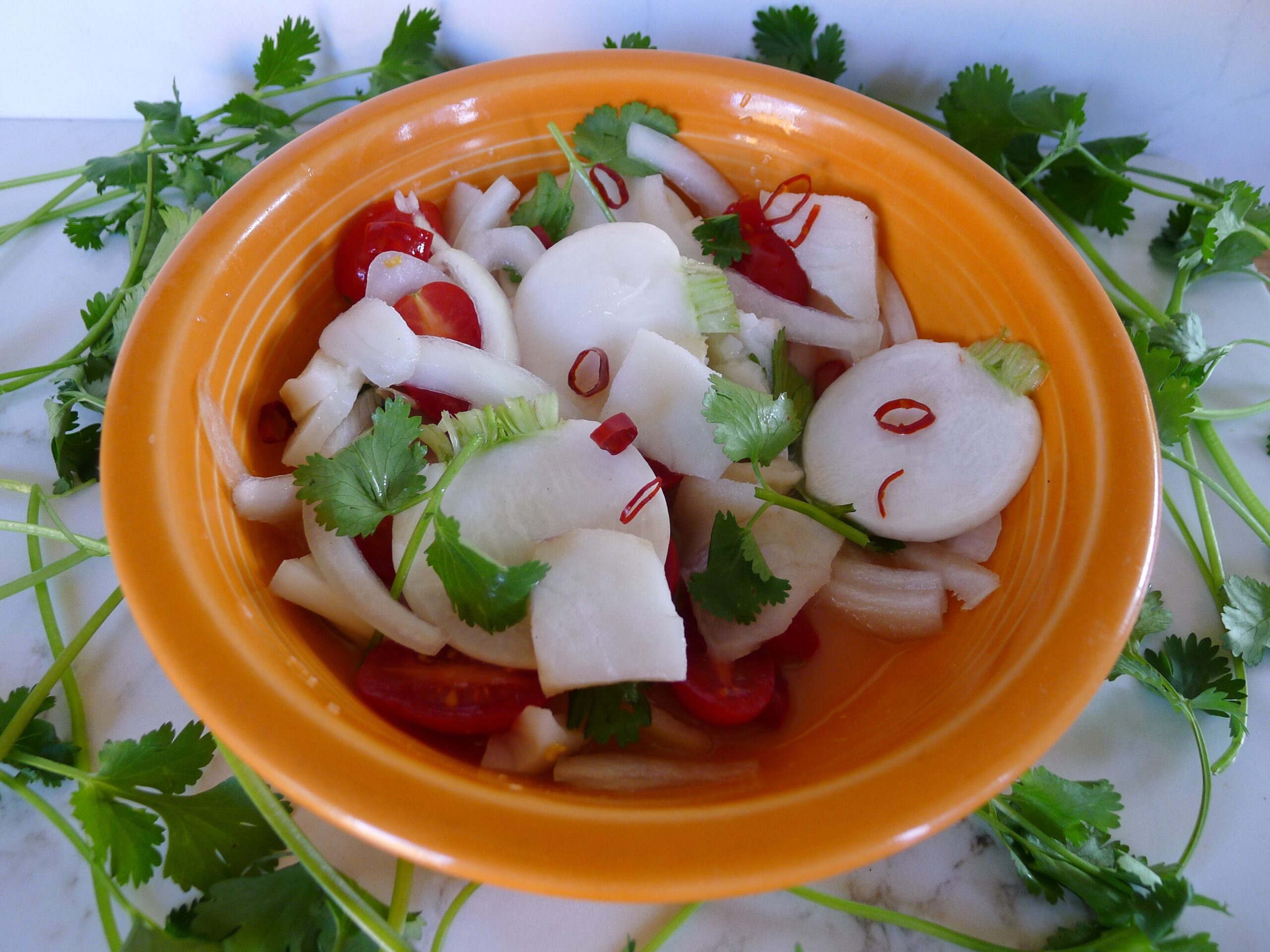The Caviar of Turnips
During the infamous “Turnip Winter” of 1917, World War I had left villagers so desperate for food they would break into cattle barns and steal the turnips meant for cows. For similar historical reasons in countless places, the turnip has the reputation of being a starvation food.
The hakurei (pronounced like “samurai”) turnip is no exception, having been developed in the 1950s, when Japan was desperate to feed itself after being destroyed by World War II.
Also known as the Tokyo Turnip, it had the fortune of being created by one of the greatest culinary traditions of all time. Consequently, the hakurei is exceedingly delicious. They are often called salad turnips — two words you rarely see in the same sentence — because while most turnips must be cooked into edibility, hakurei are completely delightful when they are completely raw. Just eat it like an extra-juicy apple with no core. Sweet, juicy and mild, with succulent edible foliage, calling the hakurei a turnip is like calling a Death Scorpion chile pepper a type of fruit.
Hakurei translates to “esteemed companion,” a name that, like “salad turnip” is entirely appropriate. The entire plant is edible, from green tip to root tip. You can do anything you want to a hakurei, including nothing. You don’t even need to peel its delicate skin.
The cool weather plant grows fast – about a month from sowing to harvest – and can handle a light frost and other forms of adversity. This makes them a great fall staple at the farmers market.
They are great in salads for many reasons, including their crisp, juicy texture and the fact that they go very well with acid. Since they look like scallops, I like to feature hakurei turnips in a ceviche-like presentation, with a dressing and sliced onions and hot peppers, with or without actual fish.
My favorite way to cook our esteemed companion is in miso butter with garlic, white wine and a bit of sugar. The flavors of the hakurei and miso taste like they are made for each other, and with support from the other ingredients create a quick, easy and glorious dish. You can use the same miso sauce as a glaze for baked salmon.
Getting your hands on some Tokyo Turnips can be the hardest part of hakurei cookery, but they are gaining in popularity. They might be waiting for you at market, just under your nose. Just look for the lily white globes.
Hakurei Turnips in Miso Butter Glaze
Salty, meaty, earthy and sweet, with umami aplenty, it’s almost impossible to eat this gentle dish with your eyes open. However much you prepare, it won’t last long enough to see the inside of your Tupperware.
Two servings
1 bunch of hakurei turnips – there should be about 6-8 in a bunch
2 tablespoons butter
2 teaspoons sugar
1 tablespoon miso
¼ cup vermouth or white wine
2 cloves of garlic, smashed and chopped coarsely
1 tablespoon sesame seeds
Salt
Trim the thin, spindly taproot that extends from the bottom of each turnip. Cut the stems about half and inch above the turnip and chop the stems and leaves. Cut the turnips into slices, which cook faster and absorb more glaze, or quarters, which look prettier. No need to peel them.
Boil two quarts of water with a teaspoon of salt for the greens. If you’re making soba noodles to serve it with, you can cook the greens in the leftover soba water. Either way, boil them for five minutes. Drain, plunge into a gallon or so of cold water, and drain again.
Add the butter, miso, sugar and a cup of water to a pan. Turn the heat to medium and stir as it heats. When it reaches a simmer, add the vermouth and garlic, and then the turnips. Allow the liquid to cook down and thicken, about ten minutes. Season with salt if necessary – the miso may contribute enough. Flip the pieces and turn the heat down to low, so the turnips can brown but not burn. Garnish with sesame seeds, and serve with soba noodles or rice.

